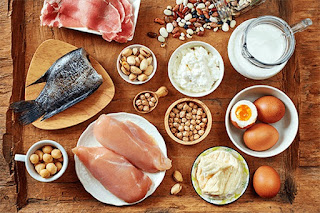The relationship between food and our bodies is complex. While a balanced diet is generally recommended, there are instances where certain food combinations may lead to conflicts within the body. In this article, we will explore some examples of food combinations that could potentially pose challenges to our digestive system, nutrient absorption, and overall well-being.
1. High-Starch Foods and Protein:
When high-starch foods, such as potatoes, rice, or pasta, are consumed with protein-rich foods like meat, poultry, or fish, conflicting digestive processes can occur. Starches require an alkaline environment in the mouth for proper digestion, while proteins need an acidic environment. Consuming both in large quantities simultaneously can lead to slower digestion and discomfort. To mitigate this conflict, it is advisable to balance your meals by incorporating a variety of foods from different food groups.
2. Fruits and Meals:
Eating fruits as part of a meal, especially immediately after consuming a full plate of food, may cause digestion-related conflicts. Fruits have a faster digestion time compared to other foods, and when eaten with a heavy meal, they can stay in the stomach longer, leading to fermentation and potential gas or bloating. To avoid conflicts, consider consuming fruits on an empty stomach or as a snack between meals.
3. Dairy and Acidic Foods:
Dairy products like milk, yogurt, or cheese are considered alkaline, while acidic foods like citrus fruits, tomatoes, or vinegar have an acidic pH. When consumed together, the acid in these foods can curdle or interfere with the digestion of dairy, leading to digestive discomfort for some individuals. It is advisable to consume these food groups separately or in moderation to minimize potential conflicts.
5. Calcium and Iron:
Calcium-rich foods, such as dairy products or leafy greens, and iron-rich foods, like red meat or beans, are both important for our health. However, when consumed together, they can interfere with each other's absorption. Calcium can inhibit the absorption of non-heme iron (found in plant-based foods) when consumed in large amounts simultaneously. To ensure optimal absorption of iron, consider consuming calcium-rich foods at a different time than iron-rich foods or pair them with foods high in vitamin C, which enhances iron absorption.
Conclusion:
While it's important to maintain a balanced diet, understanding potential conflicts between certain foods can help optimize digestion, nutrient absorption, and overall well-being. This chapter has highlighted a few examples of food combinations that may pose challenges to our bodies. It's crucial to note that individual tolerance and reactions may vary. Listening to your body, seeking professional guidance, and experimenting with various food combinations can help you determine what works best for your unique needs and preferences. Remember, nutrition is a complex science, and making informed choices is key to maintaining a healthy and enjoyable diet.


















No comments:
Post a Comment